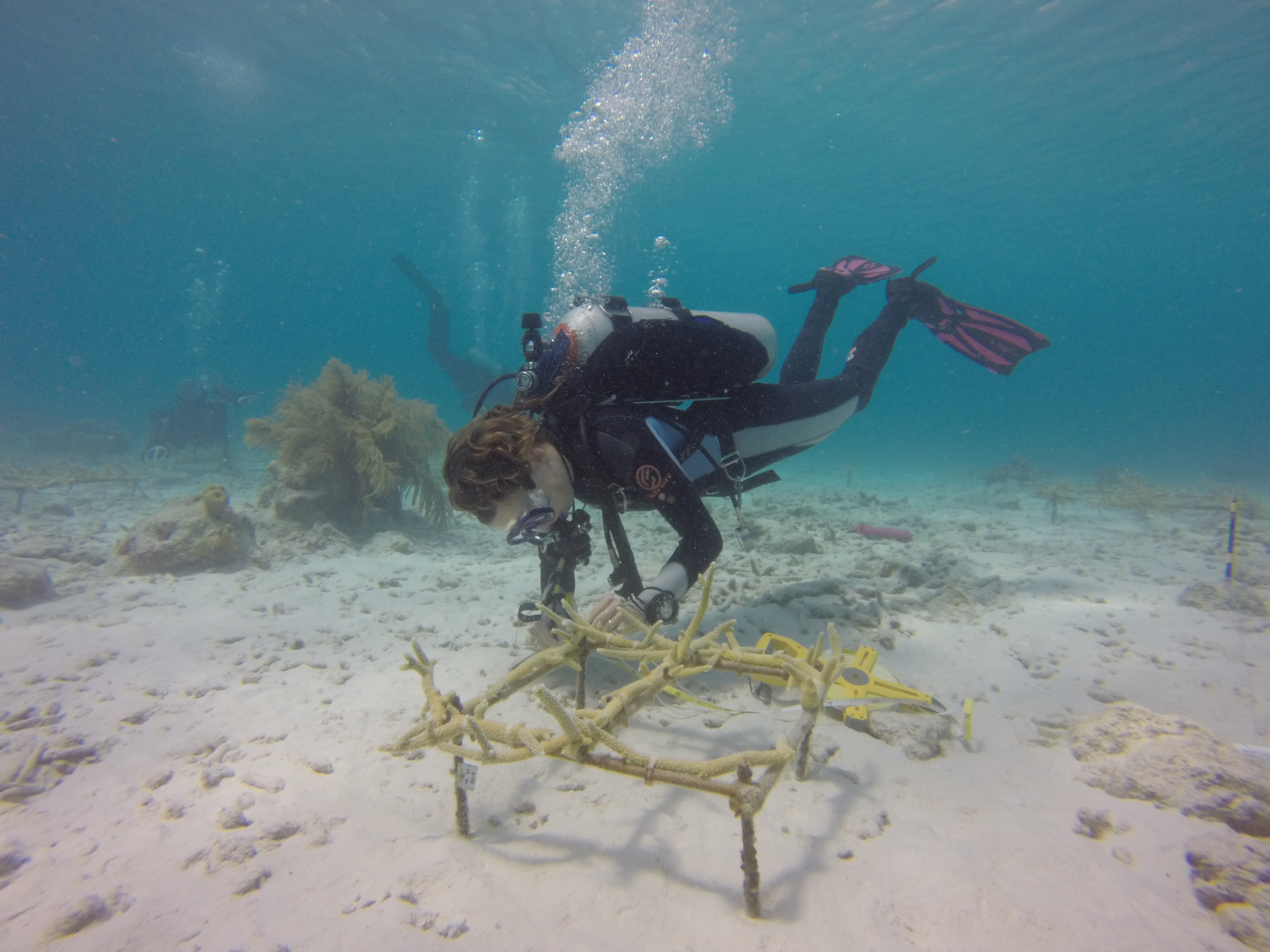
Studentenverhaal
Bonaire blog 2 - students MSc Biology and MSc Aquaculture and Marine Resource Management
Sometimes you spend 6 minutes non-stop writing. Other times, you spend them hanging, hoping for at least one fish to please appear.
Previously:
In Bonaire blog 1, Eva wrote about the preparations and training for our research project here on Bonaire. Currently, we have finished setting up our own research project and have even done the first round of monitoring. But how did that come about?
Setting up:
To be able to compare transplanted corals to wild corals, you need corals. After we had been trained, we set up underwater structures to hold our corals. In different sites, of different sizes, with several replicas. We then got a boat and some help from the CRF staff transplanted 350 corals out onto these structures, in only two days! And with that, we had our transplants set up.
Finding wild corals was, theoretically, easier. We entered the water, swam around, looked for Acropora cervicornis patches and measured their volume. Of course, these were not always easy to find. What’s more, to compare to our structures we needed patches of a similar volume, preferably on a similar depth. As nature is not always equally organised, this involved a lot of swimming, looking, and swimming...

Measuring transplanted coral reef in Bonaire. Photo by: Maarten Rutting.
Measuring:
But we got there, and with the measurements sites ready: it was time to start measuring. As Eva previously wrote, we have learned to recognise the fish and invertebrates most commonly found on patches and have prepared our measuring tools. So now it was time to apply those. Observing fish biodiversity is a rather interesting thing. Sometimes you spend 6 minutes non-stop writing, double checking your counts and size estimates while hoping your buddy with the GoPro did catch the one fish you did not know. Other times, you spend them hanging, hoping for at least one fish to please appear.
As for the other measurements: We keep getting better at holding measuring tapes, even upside-down with a surge throwing you back and forth. At not accidentally kicking and breaking other corals blocking access. At finding hidden snails and distinguishing them from hermit crabs. And at marking and measuring a patch while under attack from territorial damselfishes. They may be tiny (15 cm), but they do bite if you enter THEIR personal space…
Damselfish. Photo by: Maarten Rutting.
Out of the water:
Because everything we measure and do takes place underwater, this involves a lot of preparations and cleaning up. That is to say, you need to always bring all your (well maintained) equipment. One forgotten tank adapter can result in an hour of driving back and forth, an one leaky air hose in a day of not diving. Of course we have a lot of the equipment ourselves, but some of it (particularly air tanks) also needs to be gathered at the dive resort. Then on site all scuba sets have to be assembled so that everyone can breathe. And of course when exiting of the water everything is wet, and salty! Therefore, all sets need to be disassembled again. Next they are cleaned with sweet water to remove the salt, then left to dry. We apply the same process to ourselves, and then the collected data are transferred from the underwater slates and papers to an excel sheet. And from the GoPro memory card to a computer. The slates, papers and memory cards are wiped, and the next morning everyone grabs their clean and dry stuff and the process starts again.
Up next:
We will keep monitoring our corals. To see how much they grow and if they become more or less healthy over time. Also, we will start measuring the surroundings of the patches and see if the biodiversity surrounding them changes. I hope you enjoyed our update!
Written by: Sarina Versteeg
Fellow students: Maarten Rutting, Lieveke Crombach and Eva Mudde